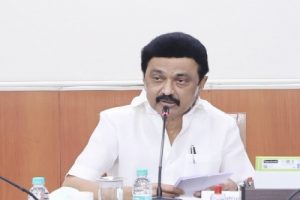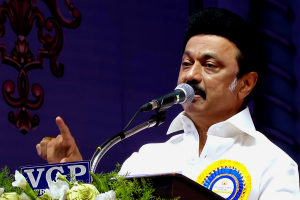On 31 July 1995, India witnessed a landmark event. Jyoti Basu, the then chief minister of West Bengal, made a call from the Writers’ Building in Kolkata to the then central telecom minister, Sukhram, becoming the first person in India to speak on a mobile phone. Nearly twenty-nine years have passed since that historic moment. Today, thanks to mobile phones, we can accomplish all our tasks instantly while sitting in our air-conditioned offices. We owe a debt of gratitude to the inventor of the mobile phone.
The term “mobile” is derived from “mobile” or “moving,” reflecting the phone‘s ability to move with us. Even though I haven’t moved, my work is still done thanks to this remarkable invention. In today’s world, mobile phones are so integral to our lives that we treat them almost like toys, replacing them immediately if they are lost or damaged, regardless of their cost. The mobile phone has become an inseparable part of human life.
Advertisement
The mobile phone has been around for fifty-three years now. The contribution of Motorola to introducing mobile phones to the world is undeniable. Motorola’s vice president John Mitchell challenged his company’s senior researcher, Martin Cooper, to develop a mobile phone, with the company covering all expenses. Martin Cooper took up the challenge and, within a few months, invented the mobile phone, making a call to his rival, Joel S. Engel, from another company, who was also engrossed in the race to invent the world’s first mobile phone. The momentous event occurred on 3 April 1973, when Martin Cooper of Motorola made the first mobile phone call from Sixth Avenue in New York City to Joel S. Engel. The phone used for this historic call was called the ‘DynaTAC.’ Ten years later, in 1983, Motorola commercially launched the mobile phone with the name DynaTAC 8000X, marking a revolutionary change in the world. Exactly twenty-two years, three months, and twenty-eight days later, mobile phones arrived in India. On 31 July 1995, from Delhi, the then central telecom minister Sukhram spoke with Jyoti Basu, the then chief minister of West Bengal. This marked the beginning of mobile phone usage in India. Although mobile phones were introduced in India nearly two decades after they first appeared globally, today, Indian mobile phones are among the top in the world in terms of market share, number of customers, business volume, company presence, and service quality.
India has over 1.1 billion mobile subscribers, making it the second-largest market in the world. In terms of network coverage, India ranks second globally. By the end of 2023, India had more than 904 million broadband internet subscribers. The total revenue from the mobile sector is 27 billion USD. The ratio of urban to rural mobile customers in India is quite balanced, with over 660 million urban subscribers and more than 525 million rural subscribers. Currently, a large number of people are employed in the telecommunications sector in India. There are few places in the world with such a skilled workforce as India.
India’s top 5 telecom companies are: 1. Reliance Jio; 2. Bharti Airtel; 3. Vodafone Idea; 4. Bharat Sanchar Nigam Limited (BSNL); and 5. Mahanagar Telephone Nigam Limited (MTNL). Based on customer numbers, network coverage, and turnover, Jio holds the top position in India, accounting for 39.7 per cent of the telecom business. The parent company is Reliance Industries, founded by Mukesh Ambani on 15 February 2007, in Ghansoli, Navi Mumbai. Currently, Akash Ambani is the chairman. Jio offers services such as landline phones, mobile phones, broadband, internet, OTT services, and mobile sets, with a total revenue of 100,577 crore INR or 12 billion USD and a profit of 20,372 crore INR or 2.4 billion USD.
Next is Bharti Airtel, which operates as a publicly traded company, expanding its business through public investment. The parent company is Public Industry Telecommunications, established on 7 July 1995. Bharti Airtel holds 33 per cent of the Indian telecom market. Sunil Mittal is the founder, with the main office located in Vasant Kunj, New Delhi. Airtel’s global business operations are widespread. Currently, Sunil Mittal is the chairman, and Gopal Vittal is the managing director and CEO. Airtel provides services including landline phones, mobile phones, broadband, satellite television, payments banks, digital television, internet television, and IPTV. Airtel’s global business revenue is 151,417.8 crore INR, or 18 billion USD. The Airtel group consists of Bharti Telecom, Singtel, Indian Continent and Free Float. Next, we have Vodafone Idea, the third-largest telecom company in India. This company holds a 19.3 per cent share of the Indian telecom market. It is a private industry telecommunications company, formed by the merger of Vodafone India and Idea Cellular on 31 August 31, 2018. Like Jio, it provides services only within India, with its headquarters located in Mumbai. The chairman of the company is Ravinder Takkar, and the CEO is Akshaya Mundra, with Kumar Mangalam Birla serving as a non-executive member. Vodafone Idea’s services include mobile, broadband, and internet. The total business volume is 42,765 crore INR, or 5.1 billion USD, with a net income of 31,238 crore INR, or 3.7 billion USD. Vodafone Idea is composed of three entities: The Indian government holds a 23.8 per cent equity share, Vodafone owns 23.2 per cent and the Aditya Birla Group holds 14.99 per cent.
In terms of business, the next major player is BSNL (Bharat Sanchar Nigam Limited), which is government-owned. BSNL controls 7.9 per cent of the Indian telecom market. The smallest player in the Indian telecom sector is MTNL (Mahanagar Telephone Nigam Limited), with a mere 0.2 per cent market share.
This provides a general overview of the current state of India’s telecom industry, where approximately 25 million people are directly or indirectly involved. India has a strong reputation in the global telecom industry, known for its highly skilled workforce. Besides India, skilled Indian workers are also contributing their expertise and reputation to other countries. Exactly thirty years ago, mobile services began their journey, and today, that same mobile service now owns the world’s second-largest network. Today, it’s hard to imagine our daily lives without mobile phones, whether for office work, children’s education, or any other need. As a Bengali, I take pride in the fact that one of the two people who had the honour of making the first mobile phone call in India was a Bengali.











